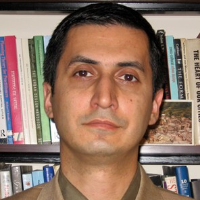Assessing the Old Buildings Reclaimability into the New Life Cycle Implementing Adaptive Reuse Potential (ARP) Model
Author(s):
Abstract:
Building stocks are the most important physical capacity for infill development and planning for their preservation, restoration and improvement in order to re-use has been an important chapter on urban conservation during the last decades. According to official statistics, parallel to paradigm shifts in the field of urban regeneration and active conservation, using old buildings in European cities has increased and the demolition and reconstruction of historical and aged structures have been pushed into the margin. In a comparison one could easily see how many of the old structures in the Iranian cities have been demolished in recent years and an important number of characteristic buildings have vanished from the urban context easily; what have been substituted has no relevance to the tangible and intangible values, lost within the process. The process of adaptive re-use is an outstanding criteria in the way of safeguarding physical and architectural identity and strengthening the placefulness of historic fabrics and urban cores. In the contemporary literature of urban regeneration, some positive characteristics and principles like social and environmental sustainability, sense of place, planning mechanism upgrading, economical efficiency and built environment authenticity are attributed to the adaptive re-use of aged structures. Meanwhile the possibility to re-use the aged structure is something that should be considered in a technical and timely manner. The life cycle of building materials and the course of inevitable decline have a tremendous role in how and when a structure could be regained and reintroduced to the urban life cycle. This article revises the process of adaptive reuse and its benefits and parallel to the subject, proposes a new equivalent for the title of Adaptive Reuse in Persian which would refer to the both parts of the term in a literary and semantic manner. Introducing the Adaptive Reuse Potential model would be a solution for tracing the decay curve of aged structures and assessing the building adaptive reuse design and obsolescence criteria. This model and its subordinate equations demonstrate the point of maximum potential and the effective useful life of a building subject to adaptive reuse. As the Adaptive Reuse has also a policy-making aspect, estimating the condition of the buildings and calculating the potential that determines whether they could be brought back to the cycle as suitable infrastructures having the peciularities needed for a contemporary role is very crucial to the course. Implementing this model in a case study reveals its condition of obsolescence and the potential for the recovery of an aged structure into a new life cycle. An old and architecturally valuable building in the historic-modern core of Tehran [Lāleh Hotel in Lālehzār-e-no Ave.], has been assessed by ARP model and confirm this hypothesis that there are many potentially good buildings capable to be re-used in the inner parts of Iranian cities which have been fallen into oblivion and if the chance of undertaking adaptive reuse projects is missed, there will be an inevitable scenario for them to be demolished and reconstructed; a deep pity for the future generation of citizens disconnected of their glorious architectural background.
Language:
Persian
Published:
Naqshejahan- Basic studies and New Technologies of Architecture and Planning, Volume:7 Issue: 3, 2017
Pages:
15 to 34
https://magiran.com/p1790054
مقالات دیگری از این نویسنده (گان)
-
Application of the Acupuncture in Comparative Analogy of Shiraz Historical Urban Fabric Green Network
Parisa Sherafati, *,
Journal of Geography and Planning,


